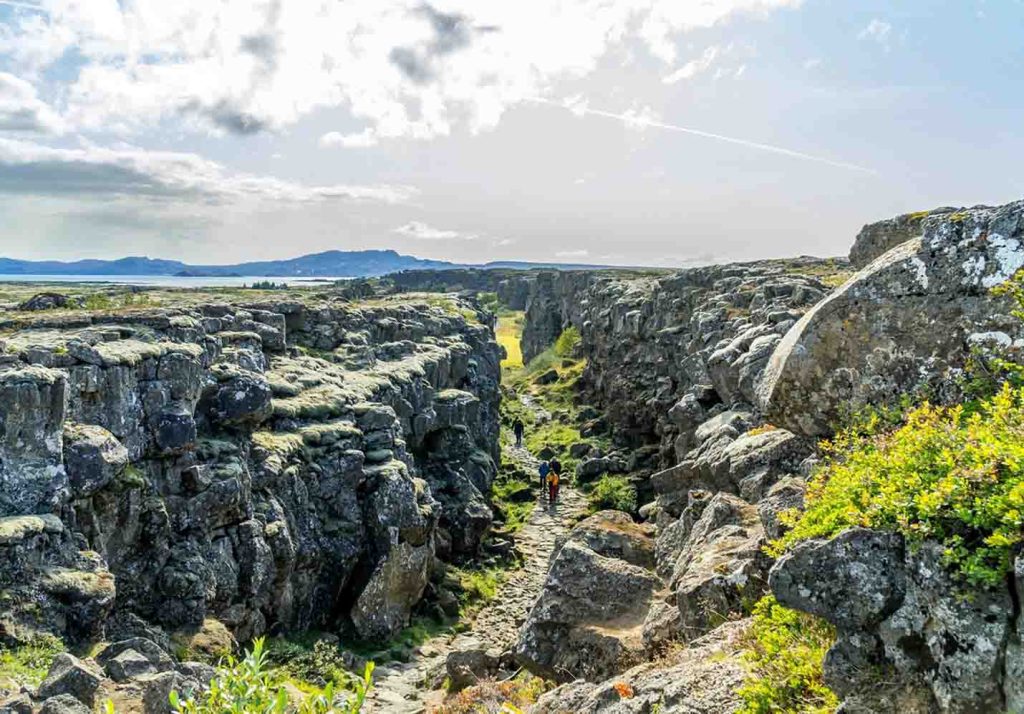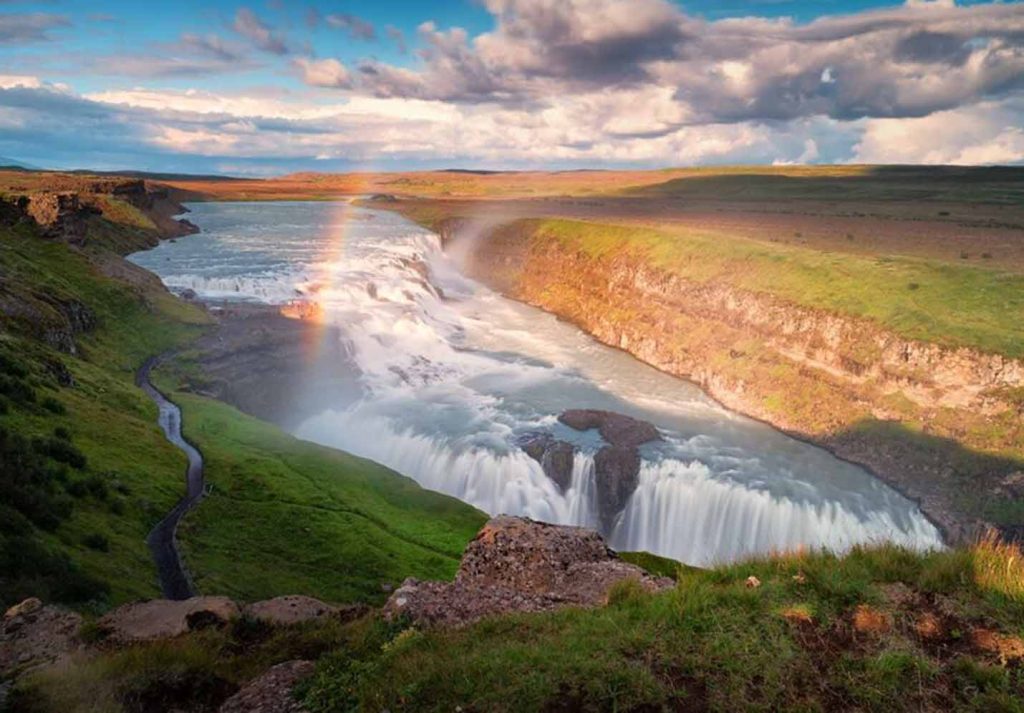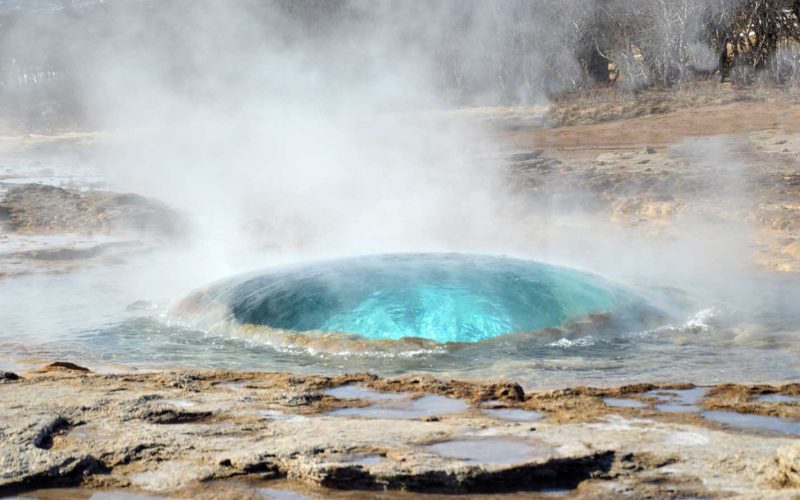The Golden Circle Tour in Iceland: A Comprehensive Travel Guide
Iceland, often referred to as the land of fire and ice, is a country that offers a diverse range of natural wonders, from glaciers and volcanoes to hot springs and geysers. Among the most popular attractions in Iceland is the Golden Circle, a scenic route that takes you to some of the country’s most iconic and breathtaking sites. Whether you’re a nature lover, a photographer, or simply someone who wants to experience the beauty of Iceland, the Golden Circle is a must-see destination. We will explore the best route for the Golden Circle, what to see along the way, and tips for making the most of your visit.
What is the Golden Circle?
The Golden Circle is a 300-kilometer (186-mile) loop that starts and ends in Reykjavik, the capital of Iceland. It encompasses three primary locations: Thingvellir National Park, the Geysir geothermal area, and Gullfoss waterfall. These sites are all easily accessible by car, making the Golden Circle an ideal self-drive route for visitors. The journey typically takes 6 to 8 hours, depending on how long you stop at each location, but many choose to take a full day or even two to explore the route thoroughly.
1. Thingvellir National Park: A UNESCO World Heritage Site
The first stop on the Golden Circle is Thingvellir National Park, a place of great historical and geological significance. This UNESCO World Heritage Site is located about 45 kilometers (28 miles) east of Reykjavik and is the site of the world’s oldest parliament, established in 930 AD. Here, Icelanders gathered to pass laws, settle disputes, and make important decisions for their community.
But Thingvellir is not just important for its history—it’s also a geological marvel. The park is situated on the boundary between the North American and Eurasian tectonic plates, making it one of the few places on Earth where you can visibly see the separation of two continental plates. The Almannagjá gorge is a dramatic rift valley that showcases this phenomenon, and visitors can walk along the fault lines, witnessing the immense power of nature.
Aside from its historical and geological significance, Thingvellir is also a beautiful location, with crystal-clear lakes, lush meadows, and dramatic volcanic landscapes. The Thingvallavatn Lake is the largest natural lake in Iceland, and it’s a perfect spot for a leisurely stroll or a photography session.
Tips for Visiting Thingvellir:
- Wear sturdy footwear, as the terrain can be uneven.
- If you’re interested in diving or snorkeling, consider visiting the Silfra Fissure, a popular diving spot between the two tectonic plates. The water is incredibly clear, offering an otherworldly experience.
- Don’t forget to check out the Thingvellir Church, which stands as a symbol of Icelandic religious history.

2. The Geysir Geothermal Area: A Fiery Wonder
Next on the Golden Circle is the Geysir geothermal area, located about 60 kilometers (37 miles) from Thingvellir. This area is home to the famous Strokkur geyser, which erupts every 5 to 10 minutes, sending hot water up to 30 meters (98 feet) into the air. Watching the eruption of Strokkur is one of the most exciting and memorable experiences on the Golden Circle, as the anticipation builds with each passing minute.
While Strokkur is the star of the show, the Geysir geothermal area is also home to the dormant Great Geysir, which gave its name to all geysers worldwide. Though the Great Geysir is no longer as active as it once was, it still occasionally erupts, reminding visitors of its power.
In addition to the geysers, the geothermal area is filled with steaming vents, bubbling hot springs, and colorful mineral deposits. The vibrant colors of the hot springs—ranging from deep blues to bright greens and reds—create an otherworldly landscape that is perfect for photography.
Tips for Visiting the Geysir Geothermal Area:
- Be sure to stay a safe distance from the geysers to avoid being caught in a sudden eruption.
- The area can be quite busy, especially during peak tourist seasons, so it’s a good idea to arrive early in the morning or later in the evening for a more peaceful experience.
- There are several shops and restaurants nearby where you can grab a bite to eat or shop for souvenirs.
3. Gullfoss: The Golden Waterfall
The final stop on the Golden Circle is Gullfoss, one of Iceland’s most iconic waterfalls. Located about 10 kilometers (6 miles) from the Geysir geothermal area, Gullfoss is a massive two-tiered waterfall that plunges 32 meters (105 feet) into a deep canyon. The waterfall’s name, meaning “Golden Falls,” comes from the golden-brown hue of the water, especially when the sun shines on it, creating a beautiful, shimmering effect.
Gullfoss is a powerful and awe-inspiring sight, and visitors can get up close to the falls on a series of walking paths and viewing platforms. The mist from the waterfall often creates rainbows on sunny days, adding to the enchantment of the location.
Tips for Visiting Gullfoss:
- Wear waterproof clothing or bring a raincoat, as the mist from the falls can get you wet.
- For the best views, take the path that leads to the lower viewing platform, where you can stand right next to the waterfall.
- During winter months, the waterfall can freeze, creating a stunning frozen landscape that is equally as beautiful as its flowing counterpart.

4. Additional Stops Along the Golden Circle
While Thingvellir, Geysir, and Gullfoss are the main highlights of the Golden Circle, there are a few additional stops you might want to consider adding to your itinerary. These include:
Kerid Crater: A volcanic crater lake located just off the Golden Circle route, Kerid is a striking sight with its deep blue waters surrounded by red volcanic rocks. It’s a short detour but well worth the visit.
Friðheimar Farm: If you’re a fan of fresh produce, make a stop at Friðheimar, a farm that grows tomatoes in greenhouses powered by geothermal energy. Here, you can enjoy a unique tomato-based lunch and learn about Iceland’s innovative farming methods.
Laugarvatn Fontana: For a relaxing end to your Golden Circle tour, consider stopping at Laugarvatn Fontana, a geothermal spa located near Laugarvatn Lake. Soak in the warm waters and enjoy the beautiful surroundings of this tranquil location.
How to Travel the Golden Circle
The Golden Circle is easily accessible from Reykjavik, and there are several ways to explore the route:
Self-Drive: Renting a car is the most popular option for exploring the Golden Circle, as it gives you the freedom to stop at each attraction at your own pace. The roads are well-maintained, and signage along the route is clear, making it easy to navigate.
Guided Tours: If you’d prefer not to drive, there are numerous guided tours available that cover the Golden Circle. These tours typically include transportation, a knowledgeable guide, and sometimes additional stops or activities such as snowmobiling or visiting a geothermal spa.
Bike Tours: For the more adventurous traveler, biking the Golden Circle is an exciting way to experience the route. Several companies offer bike rentals and guided bike tours, allowing you to cycle through the beautiful Icelandic landscape.
Why the Golden Circle is a Must-See
The Golden Circle is a perfect introduction to Iceland’s natural beauty, offering a combination of history, geology, and awe-inspiring landscapes. Whether you’re captivated by the ancient rift valleys of Thingvellir, mesmerized by the explosive eruptions at Geysir, or awestruck by the power of Gullfoss, the Golden Circle delivers an unforgettable experience.
The best part is that the Golden Circle is easily accessible and can be explored in a single day, making it an ideal itinerary for travelers of all types. Whether you’re on a short trip to Iceland or looking for a day of adventure, the Golden Circle will leave you with memories that last a lifetime.
